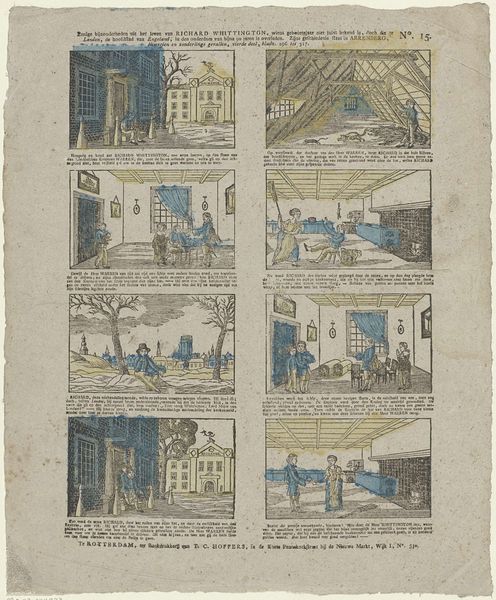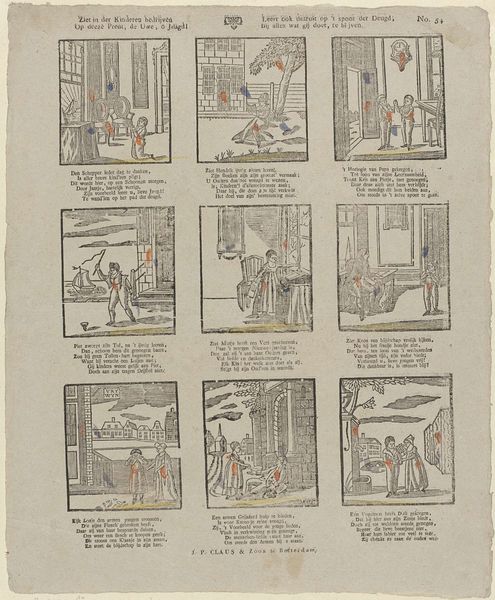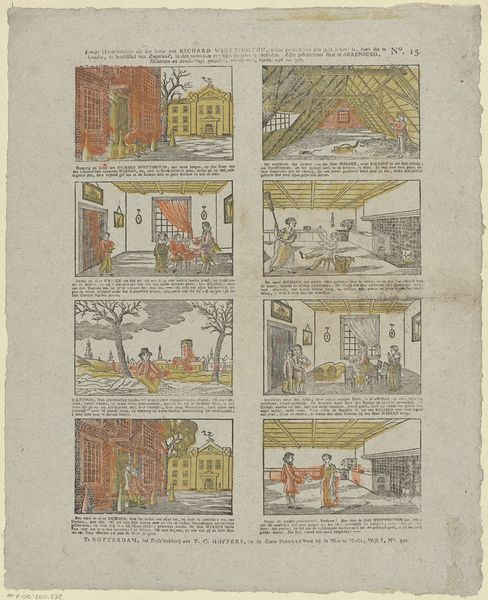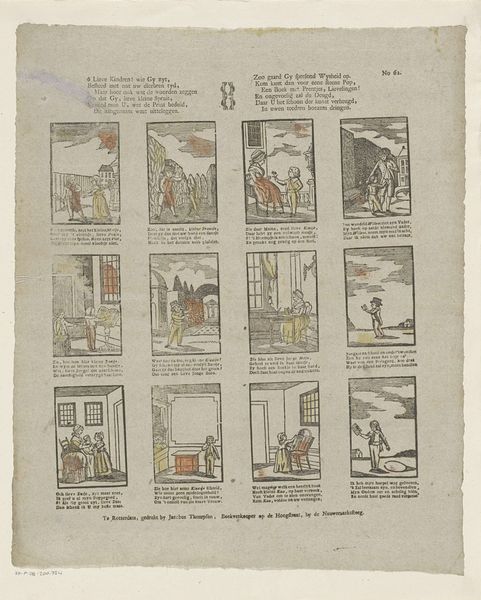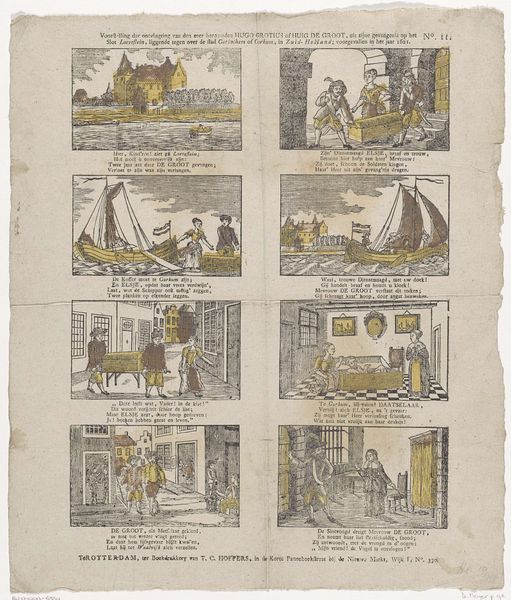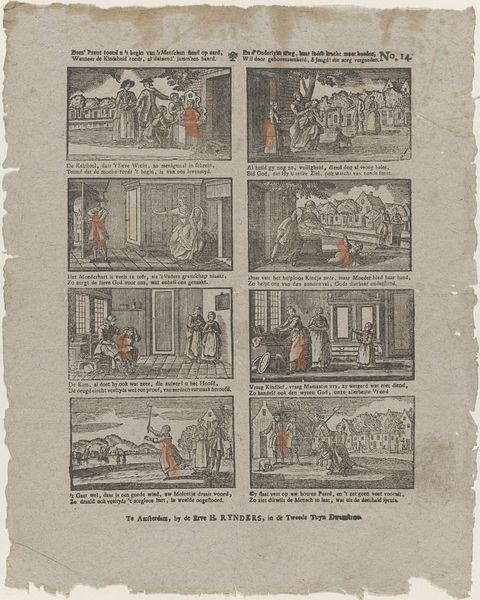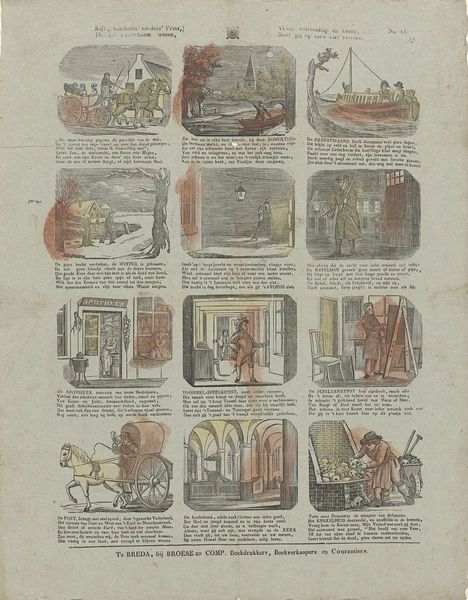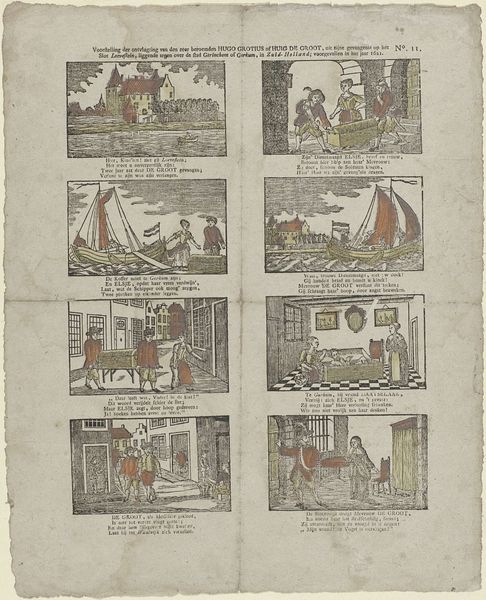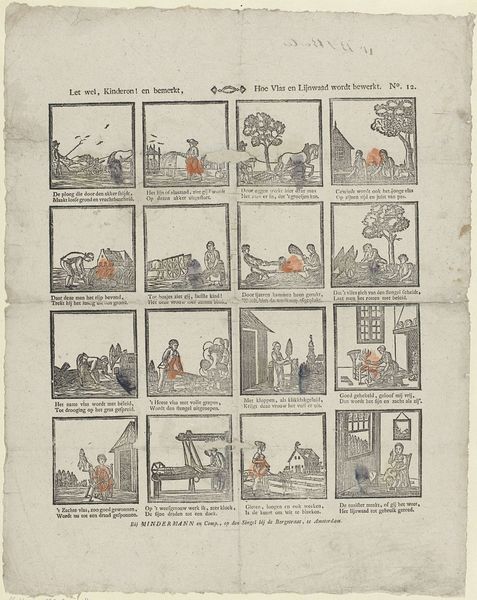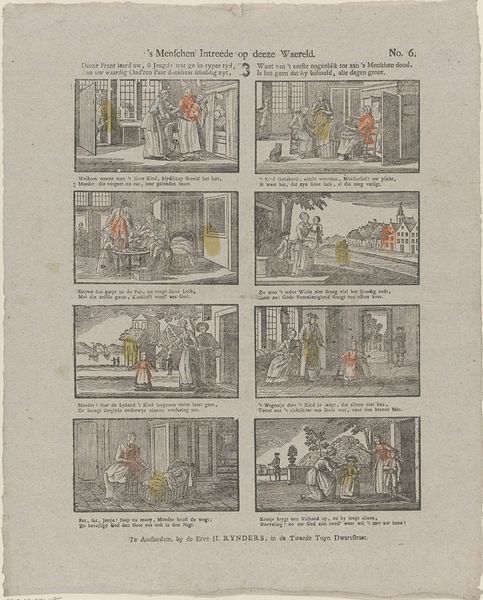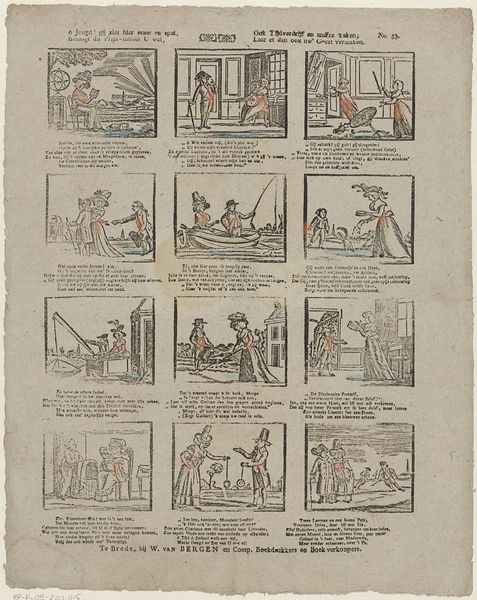
print, engraving
#
comic strip sketch
#
aged paper
#
16_19th-century
#
narrative-art
# print
#
sketch book
#
personal sketchbook
#
sketchwork
#
pen-ink sketch
#
comic
#
pen work
#
sketchbook drawing
#
genre-painting
#
storyboard and sketchbook work
#
sketchbook art
#
engraving
Dimensions: height 412 mm, width 333 mm
Copyright: Rijks Museum: Open Domain
Curator: This artwork, titled "De levensgeschiedenis van Richard Whittington," dates to somewhere between 1820 and 1848, and it is a print. At first glance, what captures your attention? Editor: It’s the sequential nature of it all, almost like a storyboard. It evokes a sense of storytelling, but the scenes look aged. Curator: Precisely. It resembles an early form of comic strip, doesn't it? I'm drawn to the fact that it's an engraving—that would require very particular technical skill, the craft of carving detailed lines into a metal plate. Consider the labor and time invested here! Editor: It does raise the question of audience and access. Who were these prints for, and how widely were they distributed? Looking at the content, the visual narrative implies a focus on upward mobility. Whittington, according to legend, rose from poverty to become Lord Mayor of London. Curator: An excellent point. The very existence of such prints hints at a burgeoning print culture, possibly catering to an aspirational middle class. And observe the simplicity of the lines and minimal color washes: clearly made with some sort of intention to be available more broadly. Editor: Exactly, it’s not just about wealth creation. Notice also how the images construct ideas about service, morality and charity, essential for integration. It subtly reproduces, perhaps normalises, particular forms of civic engagement. Curator: It does prompt a question, though, whether it functioned as propaganda of some kind, or a self-critical analysis. Considering the social unrest of the time, could it have played multiple roles? Editor: Yes. Think too, about the implications for image-making itself! Creating art for the masses raises crucial questions of taste, cultural value, and democratization of artistic expression. It moves us far away from courtly commissions! Curator: It makes you rethink what it meant to be an artist during that period; an artist functioning as communicator, even agitator potentially. It’s a very utilitarian understanding of artwork. Editor: I agree, there's so much packed into these seemingly simple frames—social history, material culture, early forms of visual narrative all intersecting. Curator: Ultimately, the "Life Story of Richard Whittington" provides a unique insight into both 19th-century production, early approaches to commercialising artworks, and the social consciousness of the period.
Comments
No comments
Be the first to comment and join the conversation on the ultimate creative platform.
